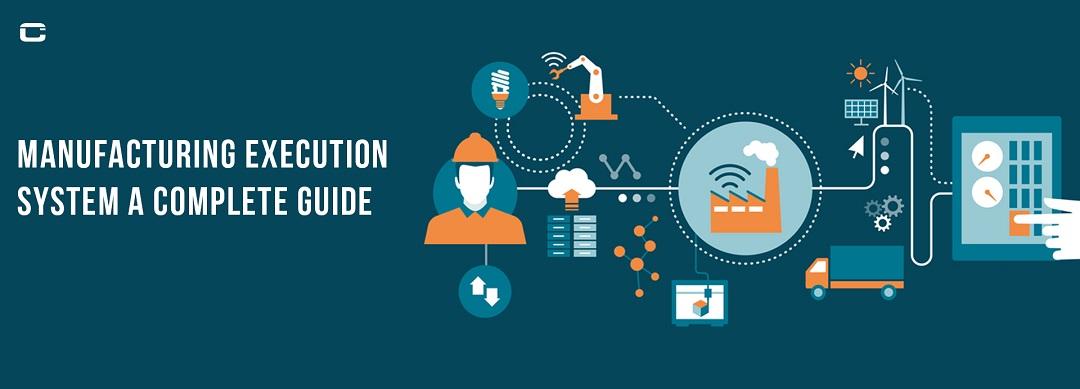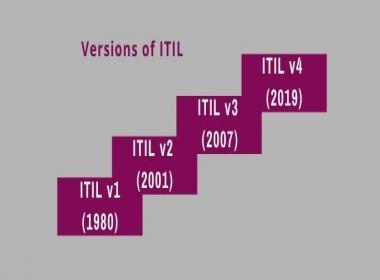
The factory performance service includes an intelligent framework to productivity growth operations while selling price pressures businesses to enhance their production efficiency every day. We as a mobile app development company Toronto have marked the most common reasons why the MES software industry is expected to reach $24,344million by 2025 are decreasing scrap, boosting uptime, and lowering expenses.
And obviously, you cannot disregard COVID-19 another aspect. In many sectors that had halted earlier, it finds itself to be a digitization promoter. These producers have, therefore, already improved digital capabilities to enable distant operations. Do you also have to digitalize your operation to prevent future disturbances? Let's begin with a strategic approach to your on-site production solutions with app development Toronto.
What is the MES manufacturing system?
An information technology that links, records, and controls the factory floor of variable production and data flows is a production execution system (MES). An MES's major aim is to guarantee that production operations are carried out successfully and that production performance is increased.
A typical MES offers customized data on the lifespan of manufacture, beginning with the placing of orders until the end of the product distribution. Like any part of the software, app development Toronto creates the production solution which includes a range of features, advantages, and workflows that support business objectives. Let's start this first with your interest, which is MES.
Advantages of MES:
1. Effective time:
- MES visual data enables teams to encourage openness, responsibility, and response,
- Friendly dashboards for users
- A view of the shift monitor in real-time
- Improved focus on driving production managers' performance
- It also allows line operators to perform better and to react more rapidly when work orders and data processing problems emerge.
2. Operations Standard:
- MES gives one- and multi-site manufacturers a system that automates business activities with standardization processes such as
- Roads and processes for monitoring
- Procedures on health and safety to assure safety
- Documents on the line to date
- This guarantees that an open-source manufacturing system ensures that all plants in multi-site organizations, to avoid duplication and misunderstanding, function in the same manner.
3. Minimize operating costs:
- MES makes it possible that all inputs for production are better regulated and cost-effective,
- The machine and progress of jobs may be monitored and alerted by the production management system to decrease direct labor expenses.
- The program gathers the information automatedly and saves operators time by improving accuracy. This manufacturing reduces indirect labor expenses.
- In addition, the program optimizes the process control of the material quantity, thereby reducing waste material costs.
4. Substitute Docs:
- MES provides a definite overview among all production methods while creating an unbroken chain with critical information through all operational activities.
- The approach for production reduces the need for physical data collecting and improves accuracy
- The application contains 100% original tablets and standalone databases
- Instead of a group of paper files, all departments have a single view of data.
5. Enhance flexibility:
- It is simple to get a competitive edge with maximum flexibility when creating custom manufacturing solutions since systems allow you to,
- Present a new product quickly
- Flawlessly adopt a new mechanism, plant, and staff
- Respond to unexpected occurrences quickly and properly
- Better blend technology with the distribution network
6. Availability Boost
- We're not just talking here about uptime for employees but also about uptime for equipment for manufacturing processes. However, the manufacturing system cares for both
- The production system produces realistic production schedules by tracking raw materials and inventory components which eliminates waste of time for an employee.
- It acknowledges that the necessary equipment and resources in production are available, and machines are installed, operated, and operated on time.
7. Methodologies and efficiency constant
- Producing software enhances security and sustainability while relevant work experience linked with planning and maintenance software provides efficiency without interfering with business processes as,
- This system offers access to data such as menus, SOPs, BOMs (bill of materials), genealogy, and other essential facts, which the supervisor or operator should otherwise examine manually.
- With the planning of staff, material, and equipment, MES software optimizes orders and enables quicker product flow to be achieved.
How does MES work
MES is a low- and mid-system that provides an intensive production process for the plant floor. Let us thus observe how each flow generates a workable layer!
Step 1. Purchase order:
- The software solution sets order forms and collects data to centralize orders in every language
Step 2. Verification & Expense:
- ME program prepares simulation, formulation, or amount of product.
- It produces quotes and cost sheets for clients and internal usage.
Step 3. Scheduling manufacturing:
- MES gives you daily, weekly, and monthly diagrams to arrange manufacturing and training in advance.
- It creates tasks and workflows for products
Stage 4. Device Planning & Cabling:
- Execution of manufacture Depending on demand and delivery times, IT networks propose work assignments for available machines and staff
- The task is monitored for each component series, and job assignments and task lists are generated instantaneously
- In the planned downtime, MES also adjusts to reprogram failures or to change jobs
Step 5. Optimize production routes:
- Production systems perform quality tests based on product progress through the factory
- MES supports the recommendation for modifications in supply routes based on performance data or digitization.
Step 6. Fully automated supply:
- MES linked to ERP systems provide the operator with the whole package including product information
- It also shows input on manufacturing from machines that stakeholders require
Step 7. Analysis of Information:
- Track production variables for each serialized item and work and accurate data
- Auto-generate customer satisfaction evaluations from data collected through business operations suppliers and customers
- Preserve the virtual string and make end-use parts repeatable
Step 8. Statistics and Insights:
- It gives an appropriate data platform for the daily, weekly, and monthly monitoring of KPIs and indicators.
- It also helps to collect and collect data and gain a holistic perspective of your business via a corporate network with third parties.
Software Architectural Production Logistics:
You now have the concept that a technology platform for producing is little more than a data result built by the combination of standardized components (MESA). This splits the manufacturing system typically into three tiers as illustrated below.
Tier 1: Defines the functions of an ERP sell physical and transportation process that utilizes setting up a factory core calendar, operational time scale, material utilization, supply, and shipment.
Tier 2: Defines MES-managed production activities that comprise a comprehensive workflow to produce the necessary final product. The group collects information and optimizes the manufacturing processes as well.
Tier-3: specifies the production monitoring system through which the whole manufacturing process from labor to result is monitored and automated. It comprises fundamental control, monitoring, system monitoring, and organizational alignment.
It functions as a functional barrier among ERP and factory line process automation, giving clarification, stability, and insights into authentic workflows, which makes the MES framework useful.
Core MES features:
Though MES is yet another answer in the manufacturing industry, each manufacturing function spends a type of funding inside each unit. Let's take a peek.
Sequencing operations/details:
This tool guarantees that your whole team is on the same page and avoids errors due to misunderstandings to offer your employee an overview of scheduled production orders and their production sequencing and implementation system comprising supporting documents.
Utilization of funds and rank:
The MES systems list the resource requirements for every production execution task as part of the method routing concept. Then it is shifted to ERP or software planning approach. This allows you to specify and monitor the status and utilization of your assets throughout the production process. The allocation and status of resource can be handled by production companies
Production unit dispatching:
The dispatch function focuses on worldwide advice for company resources planning (ERP) that is customized towards service availability, timing requirements, and capacity. The manufacturing execution ensures that the output data are still correct, accurate and up to date to monitor the two-way flow of output data from the ERP to the workshop in real-time.
Analysis of performance:
This software execution function can assist you to understand how the process works and how it might be expanded. Companies can identify and record KIPs, do predictive analyses of production performance, and provide performance tracks.
Supervision of repair:
Proactive study puts may be arranged more promptly and efficiently as part of MES to avoid downtime and production output disruptions. Organizations can enhance the development of preventative maintenance procedures to decrease the impact on plant processes. Plan just the unavoidable repairs and allow seamless manufacturing to run without hampering the performance.
Supervision of processes:
The production method has one of the main tasks of managing the production process from the order release to the process (WIP) and completed goods, including guided stages and work orders. Manufacturing systems, therefore, supply comprehensive tracking of results with method design and functional execution.
Management of quality:
This functionality can be incorporated directly into the production execution software or used by external applications to overcome compliance with regulations. Integrated quality control in the production process helps you with corrective and preventative measures (CAPA) processes, verification and non-conformity
Collect/acquire data data
This function may be called the core of the MES systems as it can either manually and automatically enter all material. You can observe and collect vital information, and access the information promptly when you need it. It just takes data from final, profiles, or laptops, libraries, or recorders to gather and store it.
Genetics and Order Fulfillment
You can trace each piece in the production line, recognize distinctive parts and materials, and even the technology and employees involved. Then you may combine the final components or quantities with all their correspondents from feedstock through the manufacturing process
Regulation of labor
Production management systems let you monitor and use employees and services' greatest productivity and characteristics in the most ideal areas when you automatically workforce. Manage and monitor the abilities they need of people, objects & activities. That implies that you always have the proper people in command at every stage of the production process.
Control Document
The operators may also quickly examine significant documents, including instructions, drawings, and notes, through manufacturing execution systems. It saves you and your team time by not digging through the file cabinets for the details that you need.
MES (Mobile Application Manufacturing Execution System):
An intelligent choice for anything that happens in your store is a centralized place in terms of software. However, is it always enough? No. On a PC or desktop, you must still call up developments. You still need space flexibility such as smartphone apps to make rapid business choices wherever in the world at any time!
Just as in this current day period mobile access is a rescue to everybody, the industrial sector has taken up this ability to enhance efficiency and productivity. Mobile access automates nearly every step from receipt of products to production plants. What leads to,
- Mobile data gathering on-site immediately
- Low time spent on assessments
- No stationary terminal bottlenecks
- Increased productivity and happiness of customers.
- Rapid response to decision-making disruptions
- Easily from anywhere change plans
So how are these advantages to you? Either you can link your production software and operate from anywhere on your mobile device, or you may develop unique mobile applications for various job areas as shown below.
regular practice MES applications:
- These applications help you acquire,
- Overall machines and workstations overview
- Overview of order and list of all production operations
- Boil-down functionality KPI monitor
- Lists of orders and installations with details
- Calendar for maintenance and input dialogues
- Clear control of manufacturing and definitions of products
- Energetic consumption recording
- Time and machine use flexible project recording
MES Labour Information and Reporting applications:
- Tracking and management applications handle the operating and productivity of your employees,
- Assistance times Collection
- Personal decision-making timesheet
- Staff attendance statuses that enable direct telephone or e-mail interaction
- Paperless requests for absence from the calendar view
- Planning systems and time-out permission by supervisors
- Single schedule of staff
Quality Assurance MES applications:
- With bespoke applications, your quality assurance team is always correct
- Inspection results collection and documentation
- View of the inspection documents concerned
- Complaints generation and procedure
- Detailed reports of shop floor staff failures
- Access to the management of escalation
Now you might want to ask if it is even worth developing multiple production systems applications for various areas of work, so let me tell you that all features and functions operate according to your own company's demands if you design your own bespoke Mobile Applications. App developers Toronto innovate it in such a way that it offers you full control of the operation.
Conclusion:
The development of manufactured intelligence over the years has shown to be a constant alternative to shop floor tech, with the development of new systems like functional apps and manufacturing execution mobile apps. So you can't create MES mobile apps or you're ready with a scheme? iQlance solution is a customized mobile app development company Canada that supports you in every step of the process. Get in touch today and plan your idea.
Also read about:
Understanding the definition of interchange fees
7 Unbelievable Facts About Appliance Testing And Tagging
Concepts for Developing Online Animal Care Apps 6 Pet Apps to Create for Your Pet Raising Company








